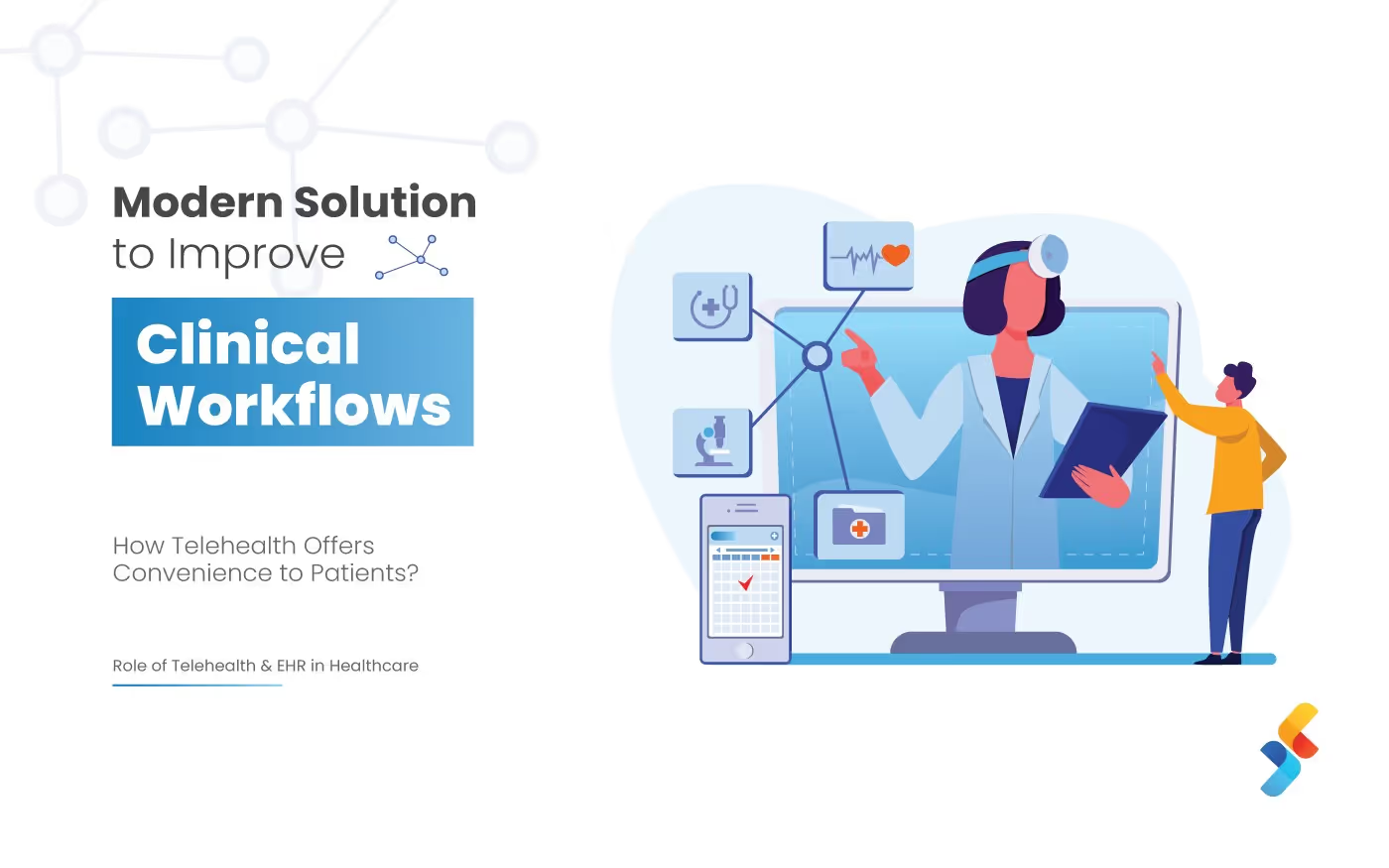For a few years, we have seen a striking shift in the healthcare industry, the delivery of healthcare services started from in-person hospital/clinic visits to the virtual visits and now has moved on to remote patient monitoring (RPM). Healthcare Industry is the most evolved and technology-driven industry so far with new advancements and innovations added to the healthcare services quite often. For the majority of healthcare providers, the consistent workflow incorporates the EMR (Electronic Medical Record) a one-stop solution for care coordination, progress tracking, and medical data storage.
To provide a more convenient and pleasant experience to the patients, the experts have combined the use of EHR (Electronic Health Records) with the evolving Telehealth solutions. Healthcare providers are bracing themselves to use EHR applications to its maximum capacity, for minimizing patient congestion at hospitals and for diminishing the number of increasing patients.
Besides, we all are aware of the global pandemic caused due to Covid-19 and its impact on the world so far. Till now, a huge amount of people have been infected with the virus. Several EHR vendors and enterprises have come forward to help restrict the spread and influence of the Covid-19 virus by implementing Telemedicine as a mainstream and robust option.
Telehealth solutions are earning huge demand due to the overpopulated hospitals and limited options for treatments. The combination of the EHR system with telehealth solutions are providing great help to healthcare enterprises by improving clinical workflows and providing better treatment to the patients. Now, the EHR vendors are implementing an integrated telehealth solution, particularly designed to be integrated with EHR platforms, enabling seamless and easy transfer of patient data from one interface to another. Combing the telehealth and EHR systems can do the following:
- Enhance the care delivery environment
- Simplify the data collecting measures
- Lessen the overhead costing
- Decrease the fatality rates for chronically ill patients
How the EHR compliments Telehealth Solutions?
According to research, 30% of the doctors using telehealth services conduct their video visits through an EHR platform. Moreover, around 45% of the physicians access their telemedicine programs through a mobile/tab. Besides, the amalgamation of telehealth solutions with EHR brings the following key advantages:
Seamless and Automated Data Entry
Data entry becomes hectic when the number of patients is more, this often leads to inaccurate patient details and miscalculated visit records. Nowadays, doctors consult remotely with their patients and create a summary of their telehealth visits. The integration of EHR systems with telehealth has created higher efficiency and feasibility for the healthcare providers at the workplace.
It also discards the duplicate data entry scenarios. During a telehealth visit, the patient’s information is directly stored into their respective health records depreciating the chances of information mismatch/loss. In this way, doctors have more detailed, accurate, and latest information about the patients that helps in enhancing the treatment approach.
Synchronized Patient Insurance Information
Many insurance organizations have commenced covering telehealth services. In such a case, keeping a record of the telehealth coverage can be a daunting and challenging task for the healthcare providers, if they don’t have the access to patient’s insurance information at the time of visit. However, with the integration of telehealth solutions with EHR, doctors verify the patient’s eligibility even before signing them up for a virtual consultation.
This ensures the doctors are reimbursed for their services and time while skipping the costly and confusing delays. Besides, EHR vendors link their systems to the insurance databases making it convenient and easy for the doctors to trace the patient’s eligibility and other benefits.
Streamlined Virtual Care Experience between the Patients and the Doctors
During the telehealth visits, doctors require access to a patient’s health records for evaluating their symptoms and performing relevant treatments. With the integration of EHR systems, doctor’s access to the patient’s health records directly, using the same system they are familiar with. Launching audio/video consultations right from present EHR systems creates seamless and simplified virtual care workflows that imitate the same authenticity as face-to-face provider/patient interactions.
Besides, patients gain a better understanding of their diagnoses and can view a simplified and easy summary of their medical history.
Conclusion
It is seen that both the healthcare and medical provides would be highly benefitted from the EHR and telehealth integration. The combination eases the flow of information, decreases the chances of errors (while updating patient records), enhances patient outcomes, and simplifies the billing process. With the growing trend of virtual patient care, doctors can provide a much faster, secure, and simplified service allowing the patients to get better and suitable treatment.
.avif)










.jpg)









